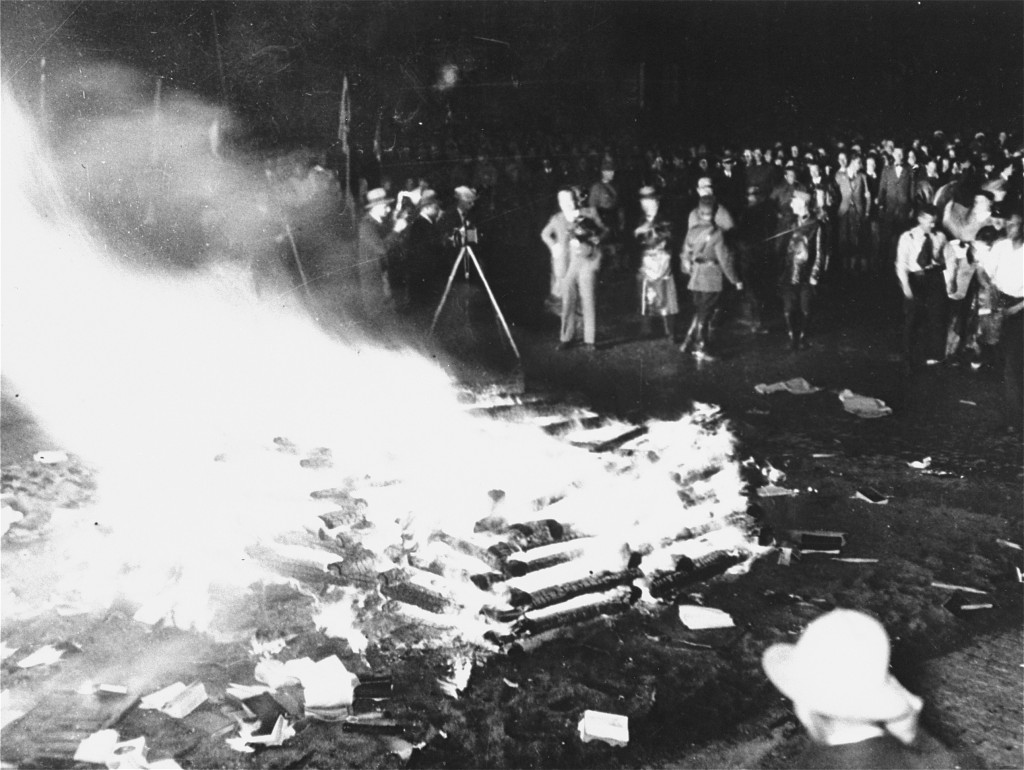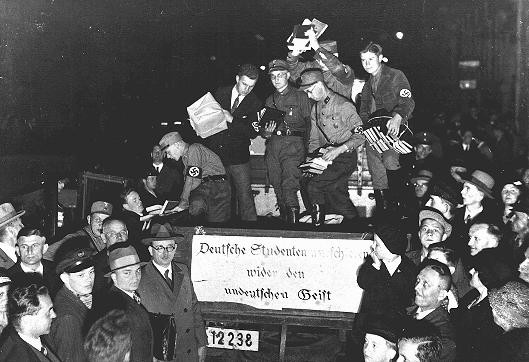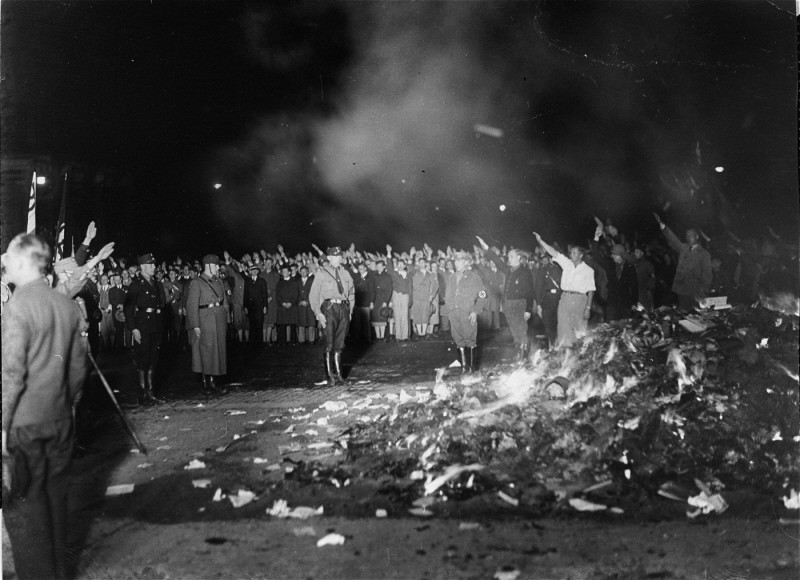
Nazi Book Burnings
In May 1933, book burnings took place in more than 20 university towns and cities across Nazi Germany. The Nazi government supported—but did not organize—these book burnings. They were the initiative of German university students. During these events, students threw tens of thousands of books into bonfires. The book burnings symbolized the Nazis’ desire to remake German culture in accordance with Nazi ideology.
Key Facts
-
1
Nazi university students destroyed books that they labeled “un-German.” This included books by Jewish authors; pacifist works that criticized war; and works praising or promoting leftist political movements, such as socialism and communism.
-
2
Many of the destroyed books were written by well-known and popular writers of the time.
-
3
In addition to the May 1933 student-led book burnings, there were dozens of book burnings carried out across Germany by other Nazi groups.
In the early 1930s, millions of Germans supported the Nazi Party. They welcomed Adolf Hitler’s appointment as chancellor in January 1933. Many Germans embraced Nazi ideas and enthusiastically helped put them into practice. This article is about book burnings organized by pro-Nazi university students in May 1933, just over three months after Hitler came to power.
In May 1933, about three and a half months after Adolf Hitler came to power, pro-Nazi university students carried out book burning ceremonies in towns and cities across Germany. During these events, students destroyed books labeled “un-German” (“undeutsch”). This included books by Jewish authors; pacifist works that criticized war; and works praising or promoting leftist political movements, such as socialism and communism.
These student-led book burnings were organized by pro-Nazi university students, not by the Nazi German government. However, a variety of local and national Nazi officials participated in the events. Their presence demonstrated that the university students had the clear support of the Nazi German regime.
Who Planned and Carried out the Nazi Book Burnings?

The May 1933 book burnings were organized by pro-Nazi university students in the Deutsche Studentenschaft (DSt). The DSt was the national umbrella organization for university student body governments. It had member chapters at universities across Germany. Even before 1933, students affiliated with the Nazi university student group (Nationalsozialistischer Deutscher Studentenbund or NSDStB) controlled the DSt and its member chapters.
The Nazi student group increased in popularity with university students in the late 1920s and early 1930s. German university students were among the early supporters of the Nazi movement. In the late 1920s, many students filled the ranks of various Nazi formations. Middle-class, secular university student organizations were often ultra-nationalist and antisemitic. After World War I, many students opposed the Weimar Republic (1918–1933). They found National Socialism a suitable vehicle for their political discontent and hostility.
After the Nazis came to power, pro-Nazi university student groups used the book burnings to show their support for the new regime and the Nazis’ antisemitic, anti-communist, and militaristic ideals.
The “Campaign Against the Un-German Spirit”
In early April 1933, the DSt’s newly-established Main Office for Press and Propaganda announced a nationwide “Campaign against the Un-German Spirit” (Aktion “Wider den undeutschen Geist”). It was to begin on April 12 and culminate in book burnings on May 10.
Over the next several weeks, the DSt’s propaganda office sent several bulletins to its member student body associations throughout Germany. These bulletins provided instructions on how to conduct the campaign and on how to organize and promote the book burning events. In these messages, the DSt instructed students to “cleanse” their own book collections as well as those of their friends and acquaintances by removing “un-German” books. They also told them to “cleanse” public libraries of certain works.
The students saw their campaign as affirming what they called “German renewal.” They described the campaign as supportive of “volk-conscious thinking and feeling” in literature. But they also described their campaign in antisemitic terms. Adapting language used to justify the April 1 national boycott of Jewish-owned businesses, the students claimed that the campaign was a response to “the shameless incitement of world Jewry against Germany.” The students also proclaimed that the campaign opposed what they called “the trash and filth of the Jewish spirit of decomposition” in literature.
The Twelve Theses
Leaders of the student association drafted twelve theses explaining their antisemitic and nationalist interpretation of German culture. These declarations described the fundamentals of a “pure” (“rein”) national language and culture. To the Nazi students, a “pure” national language and culture was defined in racial and ethnic terms. They did not believe that Jewish people could be Germans or that they should even be allowed to write in the German language.
Student groups publicized these assertions through posters. In the posters, the students:
- attacked what they called “Jewish intellectualism”;
- labeled Jews as “dangerous adversaries” and “aliens” to the German people;
- asserted the need to “purify” the German language and literature;
- demanded that students and professors be screened to ensure their thinking was in accordance with “the German spirit”; and
- demanded that universities be centers of German nationalism.
The Fire Oaths
On May 9, the DSt office sent out another bulletin to its member groups. This bulletin communicated guidelines for hosting the book burning rituals that were to begin the following day. It included a list of nine “fire oaths” (“Feuersprüche”; literally, fire pronouncements or slogans). These slogans were to be read ritualistically during the events. Speakers were instructed to read them out loud while tossing specific books on the bonfires. The oaths explained why works by certain authors were being burned. Among the authors called out by name in the fire oaths were prominent, living authors such as Erich Maria Remarque (author of the pacifist work All Quiet on the Western Front); famous psychoanalyst Sigmund Freud (who was Jewish); and Kurt Tucholsky and Carl von Ossietzky (both well-known German critics of the Nazis).
The Book Burnings of May 10, 1933

The DSt’s “Campaign against the Un-German Spirit” culminated in ritualistic book burning ceremonies across Germany beginning on May 10. Tens of thousands of books deemed “un-German” were burned. And tens of thousands of Germans (students and non-students) participated in these events.
In many places, the book burning ceremonies began with a rally or speech. This was often followed by a torchlit parade through the city. Often, Nazi officials, professors, university administrators, and/or university student leaders addressed the participants and spectators. The presence of non-student officials added a sense of legitimacy to these events. Members of the SA and SS, some of whom may have been students, also participated in the book burnings.
After the speeches, the students threw books onto bonfires with great ceremony and enthusiasm. In some places, there was a band playing, and speakers read the “fire oaths.”
About 20 of the book burning events associated with the DSt’s Campaign against the Un-German Spirit took place on May 10. Others were postponed for a few days because of rain. And some, based on local chapter preference, took place in late June, a traditional time for midsummer bonfire celebrations in Germany.
The Opernplatz Book Burning in Berlin
The largest and most significant book burning ceremony took place in the center of Berlin on May 10. Some 40,000 persons gathered on the Opernplatz (today Bebelplatz), where participants burned about 20,000 volumes. Among the materials that were burned were items that the SA and other Nazi groups had confiscated from Magnus Hirschfeld's Institute for Sexual Science.
Propaganda Minister Joseph Goebbels attended the Berlin book burning. There, he delivered a fiery address. He proclaimed, “The age of excessive Jewish intellectualism is now over, and the breakthrough of the German revolution has also cleared the path for the German way.”
The Berlin book burning became a significant propaganda event. Spotlights illuminated the Opernplatz. The speeches were broadcast over the radio. Newsreel crews filmed footage of the ritualistic event, which appeared in German and international newsreels.
The public book burnings in Berlin and across Germany led to outrage across the world, including in the United States.
What Books did the Nazis Burn?
The lists of “un-German” books that the students planned to burn were not compiled by the students themselves. Most of the book burnings in May 1933 used lists put together by Nazi librarian Wolfgang Hermann. These “blacklists” (“Schwarze Listen”) included hundreds of authors and organized books by genre. In early May, the lists appeared in multiple newspapers and magazines in Nazi Germany.
In some cases, all works by a certain author were selected for burning. In other cases, only certain works were labeled as “un-German.” The books that the students destroyed in the book burnings fell under several categories.
Books About Communism and Socialism
The Nazi students burned books that praised or promoted communism and socialism. They did so because the Nazis believed that these political theories were dangerous and undermined the future of the German people. Examples of works that the Nazis burned included:
- all works by the German political theorists Karl Marx and Friedrich Engels, including The Communist Manifesto;
- pro-socialist works by American author Jack London;
- How I Became a Socialist by American author Helen Keller;
- all works by well-known German politician August Bebel, one of the founders of the social democratic political party in the 19th century;
- many works by Vladimir Lenin, a Russian communist and dictator of the Soviet Union; and
- all works by leftist German poet and well-known dramatist Bertolt Brecht.
Books About Pacifism (Anti-War Books)
The students burned anti-war books because the Nazis thought pacifism was a dangerous and weak ideology. The Nazis believed that war was necessary to guarantee the survival and strength of the German people. Examples of burned pacifist works included:
- A Farewell to Arms by American author Ernest Hemingway;
- Im Westen nichts Neues (All Quiet on the Western Front) and all other works by German author Erich Maria Remarque; and
- works by anarchist and pacifist Erich Mühsam.
Works Praising or Defending the Weimar Republic
The Nazis burned books that praised the Weimar Republic, because they hated this government, which they condemned as “the System.” They believed parliamentary democracy was a weak form of government. Instead, they advocated for a strong authoritarian state. German author Thomas Mann’s Von deutscher Republik (On the German Republic) was one of the books destroyed for this reason.
Works Condemning the Nazis
The students burned works by authors who criticized the Nazi Party. Books in this category included:
- Deutsche Ansprache: Ein Appell an die Vernunft (An Appeal to Reason) by Thomas Mann;
- all works by Kurt Tucholsky, a journalist and satirist who relentlessly mocked the Nazis in the early 1930s; and
- articles by the prominent pacifist journalist and publisher Carl von Ossietzky, who had exposed illegal German rearmament and often criticized the Nazis.
Books by Jewish authors
The Nazis burned books written by Jewish authors because the Nazis were radically and obsessively antisemitic. They hated Jewish people and believed the false idea that Jews were a separate, inferior, and dangerous race. The Nazis argued that Jewish authors should not be allowed to write in the German language. This was because, the Nazis claimed, Jews were not real Germans. Examples of books by Jewish authors that the Nazis burned included:
- all works by Austrian Jewish author Stefan Zweig;
- most works by Austrian Jewish author Franz Werfel;
- almost all works by Prague-born Jewish author Max Brod;
- all works by German Jewish author Lion Feuchtwanger; and
- all works by Austrian Jewish psychoanalyst Sigmund Freud.
What Happened to the Authors Whose Books were Burned?
Many of the authors whose books were burned in the student book burnings were alive at the time and living in Germany. The Nazi regime not only endangered their works and livelihoods, but also their lives.
Rightly fearing Nazi oppression, many authors fled. Most managed to escape Germany. Some found refuge in Austria, France, or Czechoslovakia. They were forced to flee again as the Nazis took over Europe beginning in 1938. Several, including Feuchtwanger and Werfel, eventually escaped Europe with the help of American rescuer Varian Fry.
Beginning in summer 1933, the Nazi German government revoked the citizenship of many of these authors. This included Nazi critics such as Heinrich Mann and Ernst Toller.
Notably, two authors, Mühsam and Ossietsky, were already imprisoned at the time of the student book burnings. The Nazis had arrested both men on February 28, 1933. They subsequently imprisoned and tortured them in concentration camps. The Nazis murdered Mühsam on July 11, 1934 in the Oranienburg concentration camp. Ossietsky’s imprisonment received international attention. He was awarded the Nobel Peace Prize in 1936. He received the award “for his burning love for freedom of thought and expression and his valuable contribution to the cause of peace.” Ossietsky died in 1938, still in custody, as a result of his imprisonment.
The Book Burnings in the Context of Nazification
The student-led book burnings were part of a larger phenomenon of Nazification that was underway in spring 1933. The new Nazi regime was transforming all aspects of German society.
That spring, other Nazi Party groups and Nazi paramilitaries (including the SA, the SS, and Hitler Youth) also carried out book burnings. Often, these groups would burn book collections that they confiscated from trade unions or Social Democratic or Communist Party offices. They also burned books from schools and public libraries.
Why did the Nazis Burn Books?
The Nazis burned books to showcase what they saw as the triumph of their worldview over competing ideas. They symbolically destroyed works of literature, science, and scholarship that conflicted with or challenged their ideology.
The book burnings also represented the symbolic cleansing by fire of German society, removing people and ideas that were, according to the Nazis, not really German.
Critical Thinking Questions
If Jews were the principal target during the Holocaust, why were books written by non-Jewish authors burned?
How did the German public react? What was reaction like outside of Germany?
Why do oppressive regimes promote or support censorship and book burning? Why might this be a warning sign for mass atrocity?
How can knowledge of the events in Germany and Europe before the Nazis came to power help citizens today respond to threats of genocide and mass atrocity in the world?


